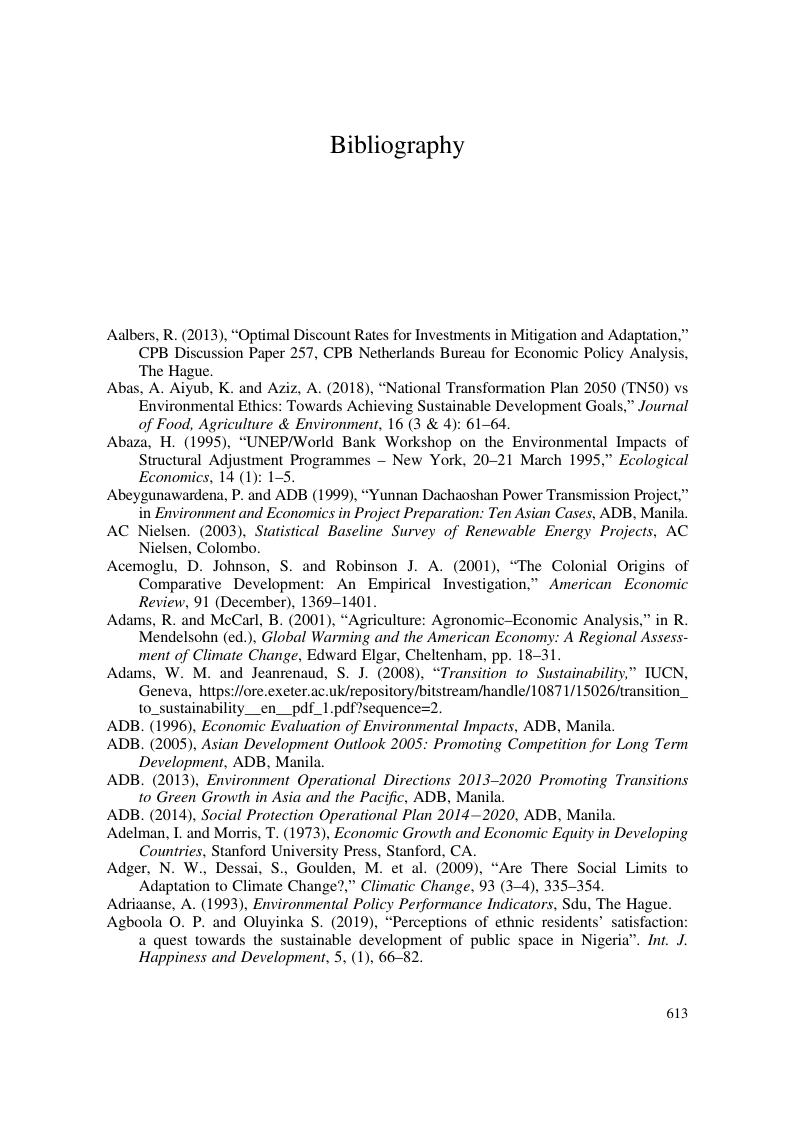 Sustainability in the Twenty-First Century
Sustainability in the Twenty-First Century Book contents
- Sustainability in the Twenty-First Century
- Sustainability in the Twenty-First Century
- Copyright page
- Epigraph
- Dedication
- Contents
- Foreword
- Preface
- Part I Framework and Fundamental
- Part II Global and Transnational Application
- Part III National and Macroeconomic Application
- Part IV Sectoral and Resource System Applications
- Part V Project and Local Application
- Bibliography
- Index
- References
Bibliography
Published online by Cambridge University Press: 28 May 2019
- Sustainability in the Twenty-First Century
- Sustainability in the Twenty-First Century
- Copyright page
- Epigraph
- Dedication
- Contents
- Foreword
- Preface
- Part I Framework and Fundamental
- Part II Global and Transnational Application
- Part III National and Macroeconomic Application
- Part IV Sectoral and Resource System Applications
- Part V Project and Local Application
- Bibliography
- Index
- References
Summary

- Type
- Chapter
- Information
- Sustainability in the Twenty-First CenturyApplying Sustainomics to Implement the Sustainable Development Goals, pp. 613 - 664Publisher: Cambridge University PressPrint publication year: 2019


